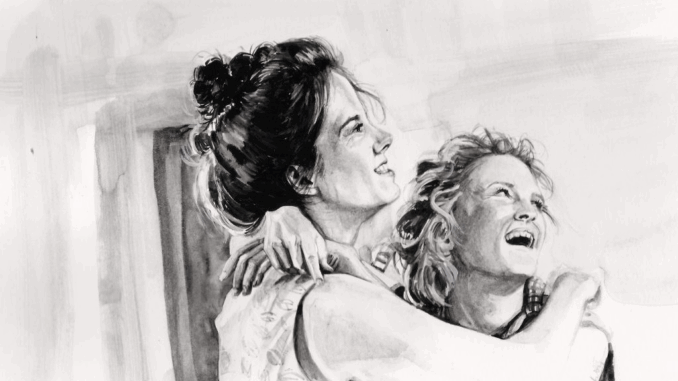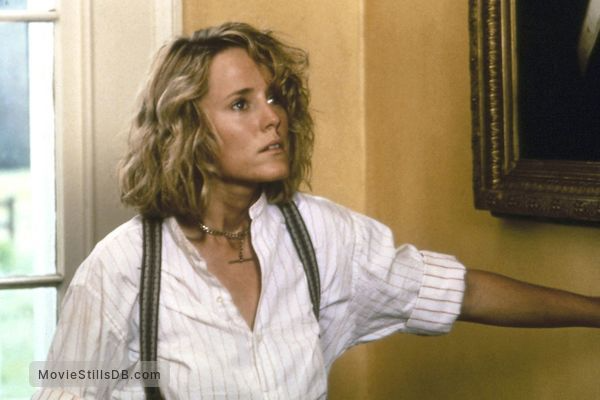
A Character Larger Than Life
In a film filled with gentle wisdom, rich relationships, and emotional depth, Idgie Threadgoode stands out like a spark in dry timber. She’s wild, magnetic, fiercely loyal, and wholly uninterested in conforming to society’s expectations. Played with fearless vitality by Mary Stuart Masterson, Idgie is the blazing core of Fried Green Tomatoes—a character who refuses to be tamed or silenced.
While the story often revolves around Ruth Jamison’s quiet strength or Evelyn Couch’s rebirth, it is Idgie who gives the film its emotional fire and rebellious soul. Mary Stuart Masterson’s portrayal is not only compelling—it is unforgettable.
This article explores how Masterson brought Idgie to life, why her performance continues to resonate across generations, and what makes Idgie Threadgoode one of the most iconic and enduring characters in American cinema.
Masterson’s Bold Casting and Preparation
When casting Idgie Threadgoode, director Jon Avnet needed someone who could convey toughness and tenderness in the same breath. Someone who could believably wrestle in the dirt with boys, then tenderly care for a dying friend. The character demanded range, nuance, and emotional authenticity.
Mary Stuart Masterson, already known for her work in Some Kind of Wonderful and Benny & Joon, was an inspired choice. She brought not only a bold physicality to the role, but also a deep emotional current. To prepare, Masterson immersed herself in Southern culture, studied Depression-era life, and worked closely with her co-stars to ensure chemistry and realism.
From the moment she appears on screen as a defiant teenager refusing to wear a dress, Masterson establishes Idgie as a force of nature.
Gender Nonconformity and Tomboy Defiance
One of the most striking elements of Idgie’s character is her unapologetic rejection of traditional femininity. In the 1920s South—a world dominated by rigid gender roles—Idgie wears pants, smokes, drinks, swears, skips church, and runs her own business. She’s a “tomboy” by the film’s vocabulary, but today, many would recognize her as gender-nonconforming, possibly even queer-coded.
Masterson plays this aspect of Idgie with effortless confidence. There’s no self-consciousness, no attempt to apologize or explain her choices. Idgie doesn’t need to assert her identity—she lives it.
In one scene, when asked by the Reverend if she’s planning to come back to church, she replies with dry wit, “Why, are you planning on getting a new roof?” The line is funny, but it also reveals a profound truth: Idgie doesn’t submit to institutions—she builds her own moral code.
The Idgie and Ruth Dynamic: Subtext and Soulmates

Much has been written about the relationship between Idgie and Ruth—especially since the film never explicitly defines their bond as romantic, despite its emotional and domestic intimacy. In Fannie Flagg’s novel, their relationship is clearly romantic. The film, constrained by the early ’90s Hollywood landscape, leaves it ambiguous.
But Mary Stuart Masterson’s performance transcends ambiguity. Her every glance at Ruth (played by Mary-Louise Parker) is laced with tenderness, protectiveness, and longing. From the moment she learns Ruth is being abused, Idgie becomes not just a friend, but a life partner in spirit.
Masterson walks the tightrope between emotional restraint and fierce devotion masterfully. Whether she’s rescuing Ruth from an abusive home, running the café together, or telling her stories on her deathbed, there is never a moment when we doubt the depth of Idgie’s love.
Humor and Grit: A Balancing Act
Idgie is not a martyr. She’s funny, mischievous, and sometimes infuriatingly stubborn. Masterson brings these qualities to the screen with sharp comic timing and earthy realism.
In one standout scene, Idgie tells Ruth’s son a tall tale about bees that don’t sting her. It’s a moment of whimsy that also reveals how Idgie uses humor to soothe pain, distract from grief, and connect with children. When she later proves her story by reaching into a beehive, it’s both comic bravado and an act of symbolic power—facing danger with no fear.
That’s what makes Masterson’s performance so dynamic: she moves seamlessly between levity and heartbreak, never losing the thread of who Idgie is at her core.
The Emotional Core: Grief and Love
Underneath Idgie’s bravado lies a sea of unhealed wounds. The loss of her brother Buddy in childhood marked her permanently. Her turn away from religion, her rebellion against social structures, and her deep distrust of others are all rooted in grief.
Mary Stuart Masterson never lets us forget this. Even in her lightest scenes, Idgie’s eyes carry pain. In scenes with Ruth, we glimpse a gentler, more vulnerable side. She smiles more. She listens. She softens, but never shrinks.
It’s this inner contrast—strength hiding sorrow, joy masking grief—that gives Masterson’s performance its emotional heft. She doesn’t play Idgie as a hero. She plays her as a survivor.
Cultural Legacy and Queer Icon Status
Though the film never labels Idgie as queer, many LGBTQ+ viewers embraced her as a cultural icon. She lives outside society’s boxes. She chooses love over convention. She builds a life not on what she’s told she should be—but on who she truly is.
Mary Stuart Masterson’s performance gave Idgie a layered and timeless identity, making her beloved across generations and communities. In a time when queer representation in mainstream cinema was rare and often tragic, Idgie was alive, vibrant, funny, and whole.
To this day, fans still debate whether Idgie and Ninny Threadgoode are the same person (as hinted in the film), or whether Idgie lived on somewhere, quietly rewriting the rules of womanhood from the sidelines. What’s certain is that Masterson gave us a character who never stops inspiring people to live more boldly.
Chemistry with the Cast
The film’s emotional power hinges on the deep chemistry between the leads. Masterson’s connection with Mary-Louise Parker is palpable—they move like old lovers, speak with unspoken understanding, and fight like only people bound by deep affection can.
Her rapport with Cicely Tyson (Sipsey) and Stan Shaw (Big George) is equally compelling, reflecting cross-racial loyalty and respect unusual for films set in the Jim Crow South. Masterson plays Idgie as someone who values action over words—she doesn’t preach equality, she lives it.
Even in scenes with child actors or extras, Masterson maintains authenticity. She’s a performer who listens, reacts, and holds space for everyone in the frame.
Masterson’s Career and Lasting Impact
While Mary Stuart Masterson continued acting in many respected films and series, her role as Idgie remains her most iconic. It captured everything that made her a unique talent: expressive vulnerability, sharp wit, emotional range, and a sense of moral fearlessness.
She has since gone on to direct and produce, continuing her creative journey behind the camera. But for millions of viewers, she will always be Idgie—the girl who outran trains, stole hearts, and loved without apology.
Conclusion: The Wild, Tender Flame of Idgie Threadgoode
Mary Stuart Masterson’s portrayal of Idgie Threadgoode is one of the great cinematic performances of the 1990s. It’s not just a role—it’s a revelation. She brings to life a woman who refuses to be defined by gender, grief, or society’s expectations.
Through every act of defiance and every quiet moment of love, Masterson builds a character that feels at once mythic and profoundly real.
Idgie lives on not only in memory, but in every person who’s ever felt like they didn’t fit the mold, who’s ever loved deeply in silence, or who’s ever dreamed of a life where kindness, courage, and authenticity matter more than conformity.
She’s not just a character. She’s a spirit. A flame. A threadgoode.
